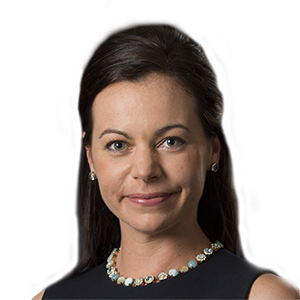This article was co-authored with Shayna Correa.
In December 2022, and with a view to informing changes to policy and/or legislation, the previous NSW Minister for the Environment asked the Office of the Chief Scientist & Engineer (OCSE) to provide a report on the management of asbestos in recovered fines and materials for beneficial reuse (the Report). For convenience, in this article we will refer to “recovered fines and materials for beneficial reuse” as “waste”.
Since that date, the interest in improving the current regulation of asbestos in recovered fines and other materials has only intensified, including because of the widespread discovery of asbestos in mulch and increasingly limited landfill capacity.
On 11 December 2024, the OCSE delivered its Report to the current NSW Minister for the Environment, Penny Sharpe, and today the Report was published on the website of the OCSE.
Key recommendations of the OCSE
The Report is almost 100 pages long, but here is what you really need to know:
The OCSE considers that the current regulation of asbestos in waste needs to change.
As the regulated community knows only too well, currently:
- If a stockpile of waste contains one fibre of asbestos, then the whole stockpile is deemed to be “asbestos waste”.
- There is a strict ban on the reuse of asbestos waste.
- Asbestos waste can only be disposed of at facilities specifically licensed to receive that waste.
The OCSE is critical of this “zero tolerance” approach. It considers that asbestos risk is not “…adequately captured by the concept of “zero tolerance”” and that this approach fails to achieve the desired outcome of eliminating asbestos from waste for beneficial reuse.
Further, the OCSE highlighted that the requirement for “zero tolerance” for asbestos is predominately imposed at recycling facilities who, “… carry a disproportionate share of responsibility in ensuring the risks are controlled”.
The OCSE recommends that the NSW Government considers bringing an end to its long held “zero tolerance” approach to asbestos in waste.
In its place, the OCSE recommends that the NSW Government consider implementing a concentration threshold for asbestos in waste based on the current criteria of 0.001% w/w (asbestos in any form), as described in Western Australia’s “Guideline: Managing asbestos at construction and demolition waste recycling facilities” (WA Waste Guideline).
The ability to apply the new threshold is also subject to the following requirements:
- No visible asbestos containing material or ACM.
- Asbestos is not detected after applying the methodology in AS 5370.
The OCSE recommends that the EPA improves existing, and develops new, guidelines for implementing the proposed concentration threshold.
This includes the EPA:
- Updating its “Standards for managing construction waste in NSW” to include a through-chain risk-based approach by adopting the WA Waste Guideline.
- Developing new guidelines for material acceptance, inspection, sampling and analysis aimed at assessing product quality against the set threshold.
The OCSE further recommends that these new and improved guidelines be developed in consultation with industry stakeholders and validated via pilot programs.
The OCSE recommends that the NSW Government develop national competency-based training.
This training is to be for workers handling asbestos prior to its disposal, and for industry professionals, including laboratory analysts, assessors, auditors and hygienists.
The OCSE recommends funding/grants for innovation.
The development of new practices and technologies, particularly in relation to the detection of asbestos, is key to improving the regulation of asbestos in waste and addressing the associated risks.
To encourage this, the OCSE recommends that funding and grants be considered, including small grants funding for local government-run programs as well as a “NSW business research challenge program” for the development and trialling of high potential technologies.
How has the EPA responded?
The EPA is yet to publish a response to the Report, so we do not currently know whether it supports the OCSE’s recommendations.
However, in its response to Dr Cathy Wilkinson’s Independent Review of the NSW Resource Recovery Framework, the EPA stated that “The EPA will consider advice from the external scientific expert on the NSW approach to management of asbestos contaminants in waste and recovered materials and will determine how existing approaches to management of asbestos contaminants in waste and recovered materials could be improved.” In addition, in a 2023 interview with Elizabeth Wild and Sarah Mansfield (available here) the Chief Executive Officer of the EPA, Tony Chappel, indicated that the EPA was open to moving away from the “zero tolerance” approach to asbestos waste.
As such, there is cause to be optimistic that the EPA will take action to progress reforms to the current regulation of asbestos waste in line with the Report.
What does this currently mean for the construction, remediation and waste industries?
Nothing has technically changed to date. The Protection of the Environment Operations Act 1997 (NSW) has not been amended and the “zero tolerance” approach to asbestos in waste continues to apply.
However, the findings of the Report may prove to be relevant to whether the EPA takes regulatory action in relation to offences involving asbestos waste below the threshold proposed in the Report. The comments in the Report regarding the risk of harm posed by asbestos and the practical difficulties with the current regime may also be relevant to the EPA’s and Land and Environment Court’s assessment of the objective seriousness of some defendants’ conduct.
Overall, there is cause for confidence that construction and remediation works will be cheaper and more sustainable in the future. However, achieving this will still come at a cost, and more guidelines, training and protocols are likely to follow.
The OCSE’s Report can be accessed here.







